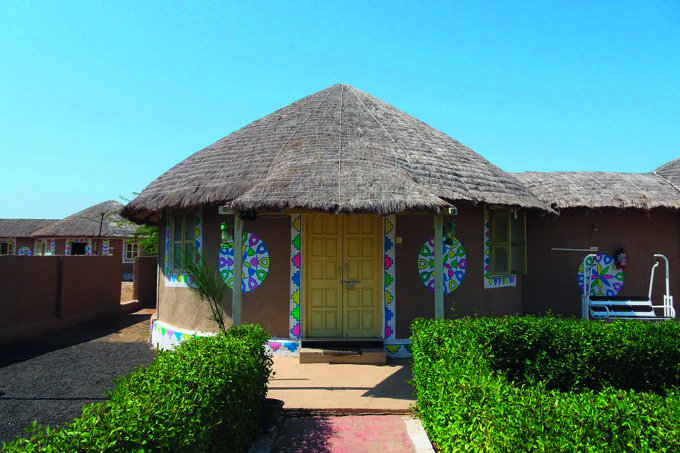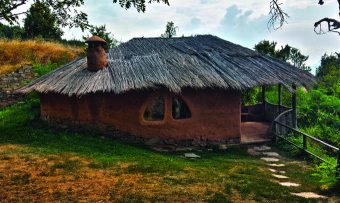
Imagine you are on a desert island. You are trying to invoke the image of Bear Grylls in hope for some hint on survival technique, but with no success whatsoever. You have nobody else to rely on, only yourself and the ingenuity of your own, and as you are determined to survive, you are throwing yourself into making a shelter. Take a look around you first. There won’t be any concrete and steel on the island, neither mixers nor cranes. You have only natural materials at your hand, but if you use them carelessly, you may damage the ecological balance of the island. Sustainability represents a synergy of the environment, economy and society. The environment aspect is reflected through the responsible use of nature’s resources, pollution prevention, biodiversity and ecological health. Having that in mind, you are presented with a perfect chance to build a real sustainable shelter of your own!
First and foremost, you need a construction material to structure your shelters. You can make the simplest refuge by sloping a long branch over a stone, log or tree. The branch will serve as a truss, and you will put smaller branches across it so that they make two slopes as if in a gable roof. Ideally, the truss should be longer than what your height is, so that you may completely stretch out when you are in laying position. Be careful not to overdo it with luxury – it will be harder for you to get and transport the material needed to build a larger place! Any tree can be used for the shelter’s construction, but since you are on the island, try to find some material that is in abundance. As the idea is to build a sustainable shelter, it is essential to use renewable resources that will have the lowest negative impact on the environment.

Bamboo grows natively in tropical areas, but certain kinds can be cultivated in the subtropics. Ideally, it can grow about one meter a day, what makes it one of the fastest-growing plants on the planet. Without being industrially treated in any way, its stalks can be used within one to five years, depending on a kind. Bamboo is traditionally utilized as a building material, and it’s becoming ever more popular due to its sustainable potential. All bamboo species are light, yet they make a durable material with anti-bacterial properties. If you plan to extend your stay on the island and remodel your shelter into a real home, keep in mind that good quality floors can be made out of bamboo. Its water-resistance is the quality that can’t be attributed to another hardwood flooring. It shouldn’t be overlooked that this material is organic and undoubtedly water-responsive, so it’s not recommendable to put it in rooms where it would frequently be exposed to moisture. Do not forget that bamboo is softer than other floorings. Therefore it will be more comfortable on touch, while on the other hand, moving of heavy furniture could leave marks on it.
Now that you have made a bamboo construction and congratulated yourself on the job well done, it’s time for your shelter to get protection against sun, wind and rain. Long and wide palm leaves are just perfect for covering the shelter because it takes less of them to spread above the entire shelter and they will provide an adequate shield against the weather. If you only have small leaves at your hand, it may be much better to use tree bark for covering. The point is to use long and/or wide pieces of bark so that you could reduce the porousness of your “overlay”. It’s not enough to only pile up the roofing over construction, especially in windy areas. If that is a case, fasten it to the construction. The rope could be adequately replaced by flexible twigs or sinewy striped leaves. Since finding drinking water on the island could pose a problem, you can optimise your “roofing” so that it collects water for you. Precipitation will be pouring down your roof, right into the containers you will have placed on the floor in the direction of streaming water.
A shelter is a place presumably dry and warm, so it is highly essential to insulate the floor, too. If you haven’t yet decided on whether the bamboo flooring is the right choice for you, cover the floor with a layer of vegetation. The purpose of the insulation layer is to separate your feet from sandy or earthy bottom surface that your shelter rests on. Any kind of leaves, laid down in multiple layers, will serve well as a floor covering.
By using the mixture of water, soil and straw, which are the materials that nature abounds with, you can make a long-lasting solution for the entire thermal insulation, as well as the construction. There are various techniques for the use of soil in architecture. Filling wooden moulds (formwork) with earth by pouring one layer after another is a technique known as rammed earth wall. The soil must be moist when being rammed as it allows to be easily moulded. The surface soil isn’t suitable for moulding; therefore it is recommended to use layers at a minimum depth of one meter. Add some straw in the mixture of water and soil which will serve as a binder, crucial for the structure of the house. Unfired bricks, hand-formed and dried in the sun, are called mudbricks. The only limiting factor of the rammed earth wall is its height, while the advantages are numerous. The earth walls will absorb the outside temperature over the day, keeping the indoor space in the shade, whereas over the night they will emit accumulated heat and thus maintain the temperature optimum. They also stand out for good acoustics, so houses made of this material are beautiful to live in. They are resistant to fires but keep in mind that moist climate could affect the bricks quality in as much as their solidness is gained by drying the soil.
Survival experts emphasise that a man is a social being and that survival task would be much easier if completed in a company. Apart from fulfilling one’s need to socialise, other people can contribute with their strength, knowledge, and even by a mere presence which can incite motivation.

Drinking water can be collected using solar energy. Dig a hole in the sand, in a sunny place. Place a container for water in the middle of the hole and put some freshly cut leaves around it. Cover the hole with a piece of plastic or some other non-porous material which will capture the air within. Put more massive stones along the edges of the plastic lid to secure it, and a lighter rock in the middle so that it makes a dip. The heat will dry out moisture from the leaves which, having been trapped beneath that non-porous material, will start to gather as drops. These droplets will flow down the slope made by the lighter stone and fall into the bowl in the hole. The most important thing is to keep that cover out of contact with the edges of the bowl so that it doesn’t diminish the effectiveness of this gadget.
When cladding your shelter, be sure to leave some space for air circulation. Cold air is heavier and flows closer to the ground so that it will go through your shelter, too. Cold air that comes in will become warmer and lighter. Do not trap it in, but make openings at the top of the shelter, allowing air flow. Persian traditional architecture attained natural ventilation by means of windcatchers – chimneylike towers that are open from one side for “catching the wind”. Their purpose is to direct the wind to the living space, and from that place, it would, after being warmed, go out through the other hole. Air circulation doesn’t affect the temperature directly in the object, but the airflow achieves the cooling effect.
More advanced versions of Persian windcatchers canalise the wind through channels to the water pool before directing it to the living space. That way the air gets cooled down in the water reservoir, and as such, it decreases the temperature when it flows into the building.
You’ve reached the very end. Having used nearby materials and logic, you made a shelter in a delicate ecological system such as desert island without harming the environment. Challenges were overcome without applying the principles of modern house-construction which don’t provide adequate solutions for climatic conditions, and without using materials whose production harm our environment.
Guided by the principles of sustainable design, we can consider plots for house-construction as desert islands, which are being surrounded by unsustainable design. When we have a choice to build a house from scratch, on an empty plot of land or desert island, why wouldn’t we make one simple, accessible, responsible and sustainable system? Think about the energy effectiveness of the materials, the price and the impact of the production, the installation and use on the environment. Think of other people in your environment and about the next generations. Your contribution is essential, so let’s make an archipelago of sustainable islands before we get swallowed by the unsustainable sea.
This article was published in the eleventh issue of the Energy Portal Magazine SUSTAINABLE ARCHITECTURE, in July 2018.
Prepared by: Petar Veselinovic



